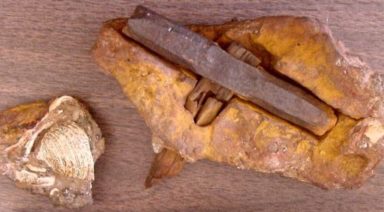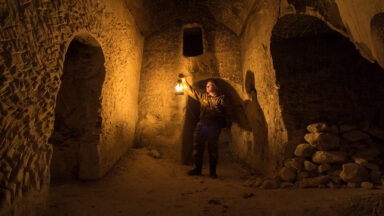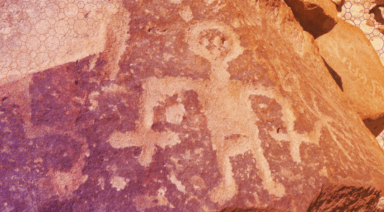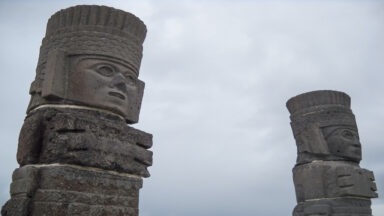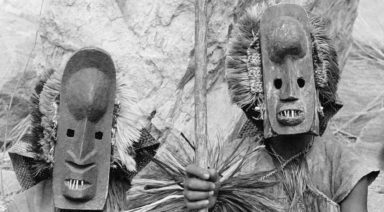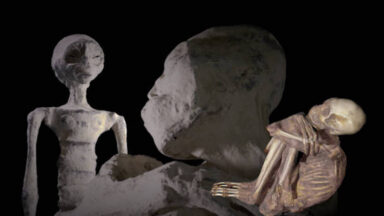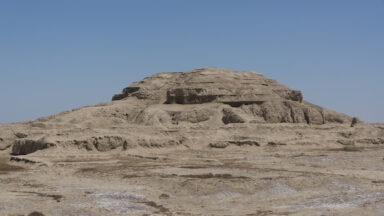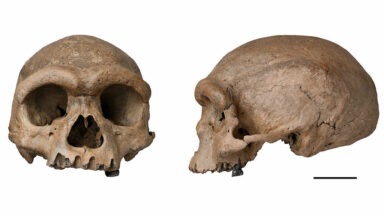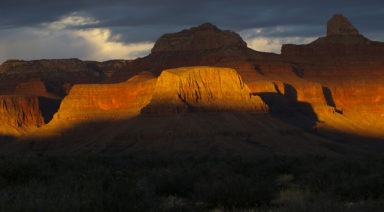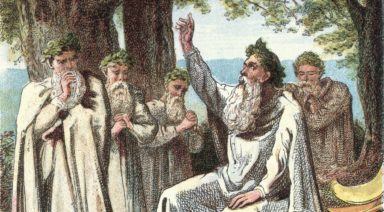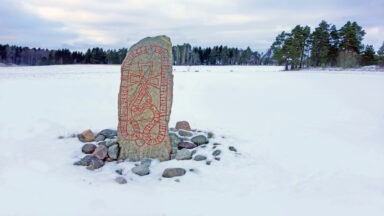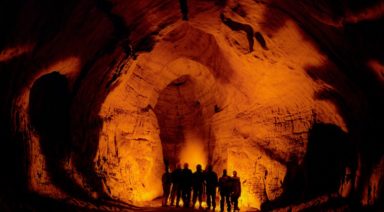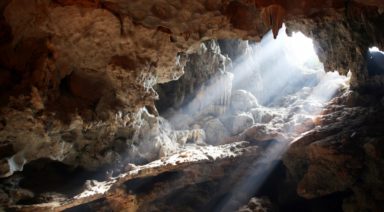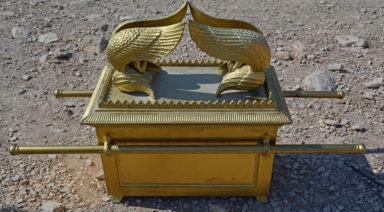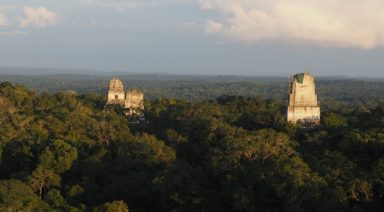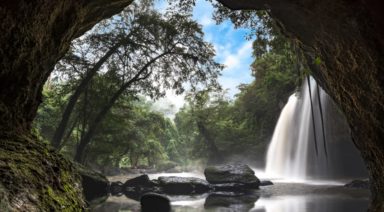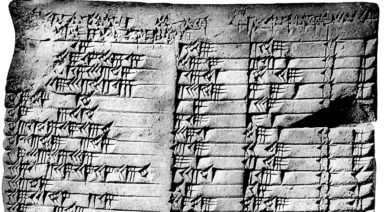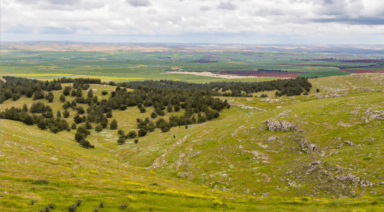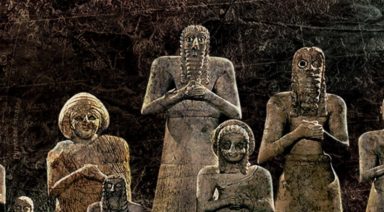This Conspiracy Claims the Smithsonian Destroys Giant Skeletons
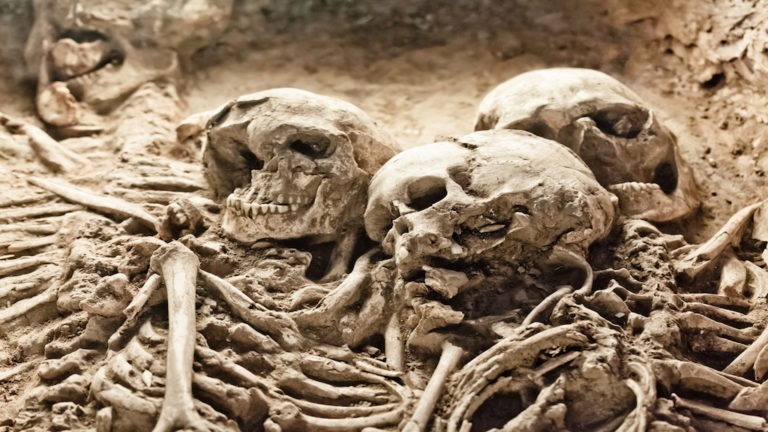
Around the turn of the 20th century, The New York Times, London Globe, and Scientific American published articles purporting the discovery of gigantic human skeletons, concluding that the remains were sent to the Smithsonian for further study. But the fact that this evidence was never again seen or reported, continues to elicit questions of whether the Smithsonian destroys giant skeletons in order to cover up an inconvenient anomaly in the archeological narrative we’ve been told.
The question has been heatedly debated over the past century or more, with researchers finding what appears to be corroborating evidence, while skeptics say the bones were simply those of massive prehistoric animals, reclassified by the Smithsonian and displayed in museums to this day.
And while physical evidence remains tenuous, there is a seemingly endless trail of written and anecdotal suggestion that a larger race of humans once walked the Earth.
A Brief History of the Smithsonian
Though it may not be immediately obvious, the Smithsonian Institution is an extension of the U.S. government with congressional members sitting on its Board of Regents. It was initially founded as “an establishment for the increase and diffusion of knowledge among men,” at the endowment of philanthropist, chemist, and mineralogist James Smithson.
And while it’s not a regulatory agency, it is so intrinsically tied to government that it claims immunity from state and local regulations, as well as immunity from lawsuits unless authorized by Congress.
The Smithsonian was established in 1846, and was tasked with the mission of organizing the anthropological history of the United States. It is sometimes referred to as “the nation’s attic,” as it has amassed somewhere in the range of 154 million items between its myriad museums, research centers, and various facilities.
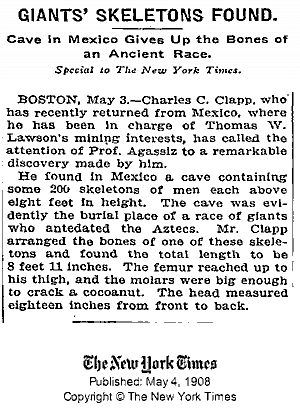
But with phrases like “diffusing knowledge,” coming from a government agency that’s been influencing the course of history since the Eurocentric days of manifest destiny, one might be skeptical about what kind of knowledge was spread and which powers it served.
Richard Dewhurst, author of The Ancient Giants Who Ruled America, points to a man named John Wesley Powell, the U.S. Director of Ethnology in 1879 who ran the Smithsonian in its nascent years. In his research, Dewhurst uncovered what he refers to as the Powell Doctrine – a paper issued on behalf of the Smithsonian, which issued a decree that no anthropological research should consider any talk of lost tribes henceforth, while also describing natives as uncultured, savage, and lacking signs of higher intellect.
“Hence it will be seen that it is illegitimate to use any pictographic matter of a date anterior to the discovery of the continent by Columbus for historic purposes,” Powell wrote.
It’s unclear whether this was Powell’s decision or if it came from instructions on high, however Dewhurst believes its clear manifest destiny tone led to the subsequent Smithsonian cover up of an ancient race of giants who preceded Native Americans.
Want to learn more about giants? Watch this special report free!
The Smithsonian Destroys Giant Skulls
Looking back at newspaper clippings dating from the late 1800s into the early 1900s, Dewhurst found a multitude of instances in which citizens from disparate areas of the country uncovered massive bones, of seemingly human origin. Upon reporting these discoveries to media outlets or authorities, Dewhurst said unsuspecting citizens would shortly receive a visit from members of the Smithsonian who wasted no time sequestering the bones – allegedly bringing them to a museum or research facility, but which were never seen again.
One could also find instances of giant skulls and skeletons in local papers with pictures to boot. Take for instance this photo from the San Antonio Press showing a giant skull next to two normal skulls for size comparison.

It’s worth mentioning that the time period when these skeletal remains were found was drastically different from today — yellow journalism was rampant even for some of the publications we might consider more esteemed.
Religion was also a dominating factor in many people’s lives, and attempts to find literal instances of biblical stories was highly sought after. This has become one of the primary arguments against these accounts, as naysayers believe people created counterfeit skeletons or confused the bones of prehistoric megafauna and large animals for humans, hoping they had found proof in the existence of the Nephilim of the Old Testament.
Giants Discovered Throughout the World?
The U.S. is not the only country in which these alleged giants of antiquity are said to have been found. In fact, there are accounts dating back several millennia, which speak of encounters with living giants or the relics hinting at their existence.
In the world’s largest prehistoric copper mine in Wales there are accounts of the discovery of thousands of massive sledgehammers alleged to weigh somewhere in the range of 60 lbs.
Whether there’s any validity to this assertion is debatable, though if true would require a larger-than-life human with incredible strength to have worked the mine and wielded such a tool – the average sledgehammer today rarely weighs more than 20 lbs. This repository, known as the Great Orme mine or the “Stonehenge of copper mining,” dates back some 3,500 years ago.
Another more well-known instance of alleged giants comes from the writings of Ferdinand Magellan’s chronicler Antonio Pigafetta, who wrote of a giant race upon discovering Patagonia.
“One day we suddenly saw a naked man of giant stature on the shore of the port, dancing, singing, and throwing dust on his head.” Pigafetta wrote.
“The captain-general sent one of our men to the giant so that he might perform the same actions as a sign of peace. Having done that, the man led the giant to an islet where the captain-general was waiting; When the giant was in the captain-general’s and our presence he marveled greatly and made signs with one finger raised upward, believing we had come from the sky. He was so tall that we reached only to his waist, and he was well proportioned.”
According to the writings of Pigafetta, Magellan and crew attempted to return to Italy with two of the giants they had encountered, though they were unable to survive the long trip back across the Atlantic.
Skeptics say the people referred to in these accounts were likely members of the Tehuelche – a native tribe that may have stood slightly larger in stature due to the strength required to survive in Patagonia’s harsh climate, though it’s questionable whether they were much larger in height than the average human.
But there are in fact a number of photographs from the late 1800s showing members of the Ona tribe that inhabited the Tierra del Fuego region of Patagonia who clearly stood significantly taller than most humans – six-and-a-half-foot-tall women and men well over seven feet.
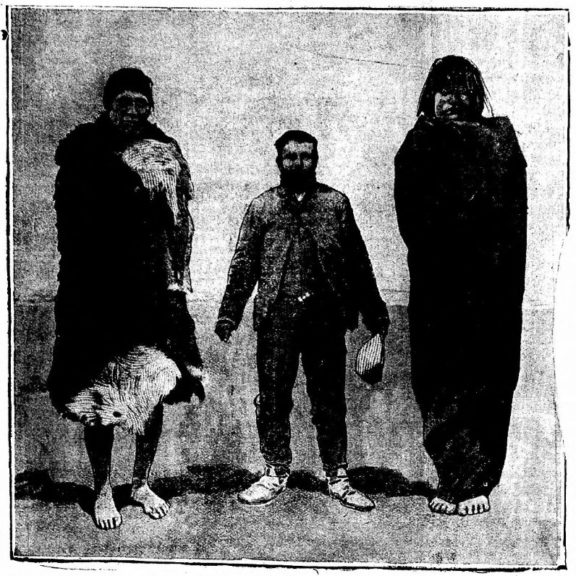
Ona natives next to a man of average height
This account has also been called into question as some say it may have simply been an instance of giantism, with subsequent reports embellished as to make Magellan’s travels sound more exciting.
However, this account was later confirmed by English explorer James Byron, whose story of encountering a race of 9-foot giants in Patagonia was published by the London Chronicle. Other writings from the expeditions of Sir Francis Drake, Francis Fletcher and Sir Thomas Cavendish also reported towering Patagonians and their deceased bodies.
Could these native tribes corroborate the questionable stories of ancient European explorers?
Still skeptical about the alleged existence of giant humans on Earth? Check out this documentary A Race of Giants:
The London Hammer: Is It An Out of Place Artifact?
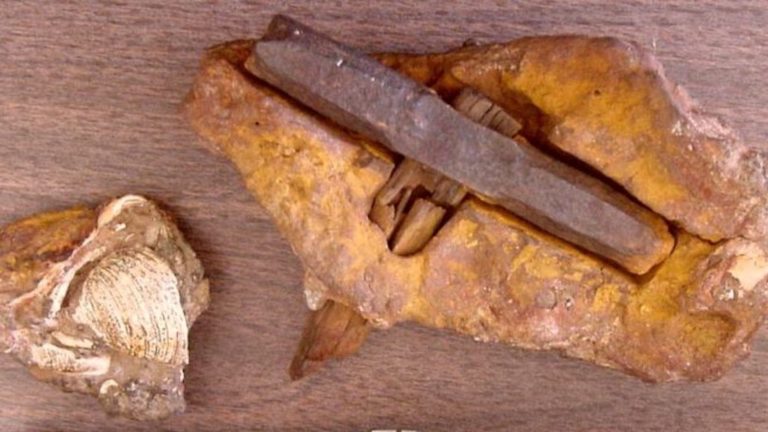
What could be so unusual or controversial about the discovery of an iron hammer encased in ancient rock? After all, archaeologists have discovered historical artifacts for as long as humans have been searching for their ancient roots. But what happens when an object defies historical study and appears to exist as a kind of time traveler in the mysterious realms between worlds? For what is known as the “London Hammer,” the world has been wrangling with a seemingly ordinary household tool steeped in mystery, archaeological wonder, and with many unanswered questions.
Alleged to date back more than 400 million years, the London Hammer, or as it is also called the London Artifact, can be looked at as a study of how the modern and ancient worlds can connect and collide. How else can we explain that an obviously human-made instrument linked to the late 1800s that never rusted despite the wood transforming into coal?
How could the London Hammer withstand typical aging impacts like oxidation, and what explanations exist for its discovery in a rock formation predating human existence? Perhaps it’s best to begin with its claimed discovery location – the small town of London, Texas.
London Hammer — From Texas to the World Stage
For Max and Emma Hahn, it was a summer day like many others. In 1936, the Texas couple took a hike along Red Creek near London, Texas, a tiny community located in the center of the Lone Star State. But the hike turned out to be like no other the Hahns had ever experienced. Not because of the weather or the beauty of the landscape but because they discovered a strange piece of wood encased in what seemed to be an unusual formation of rock.


